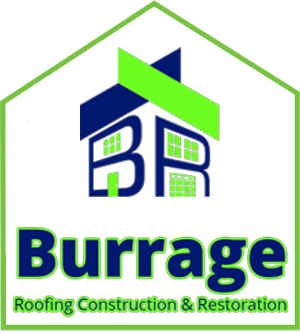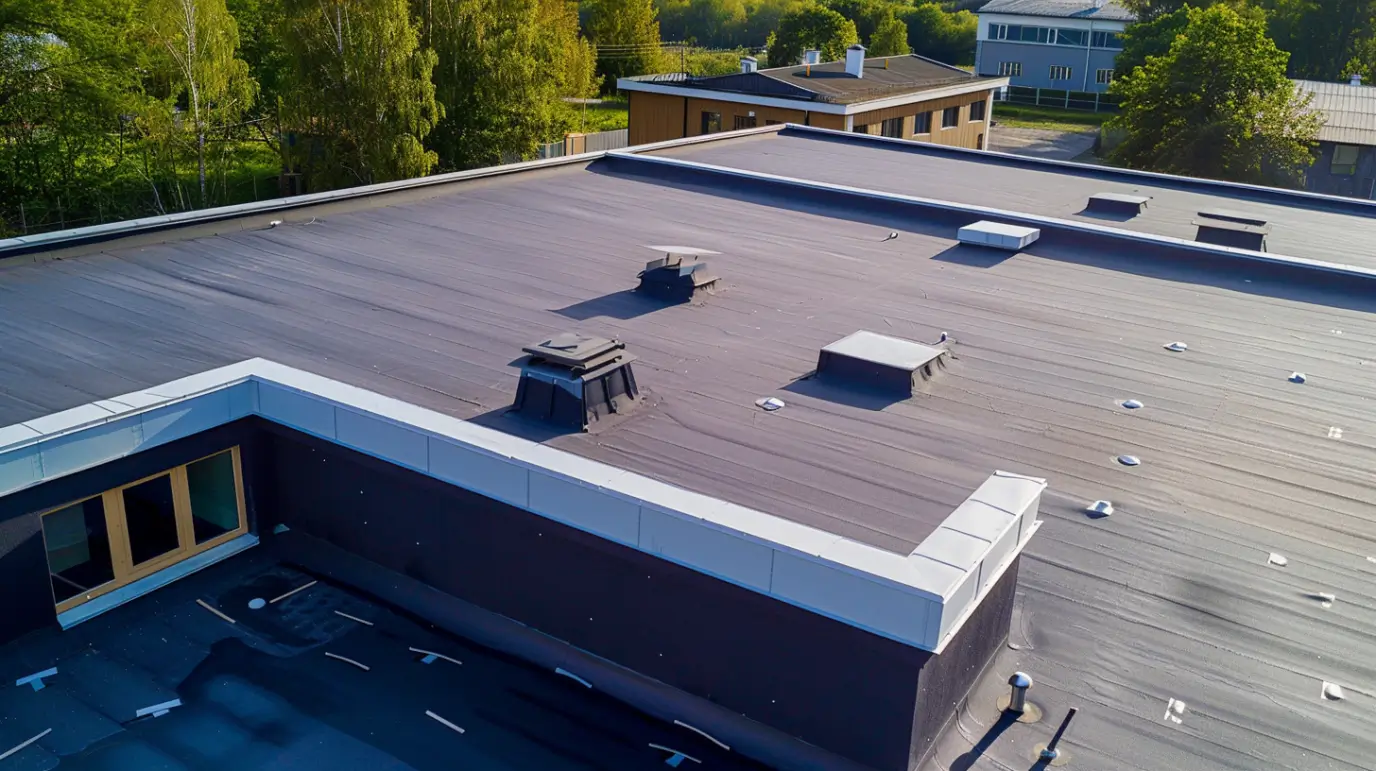Flat roofs are common for homes and businesses because they look good and work well. But, these roofs can get certain problems that need quick roof repair. Property owners in the Quad Cities see a lot of different weather, so it is important to know if you should patch your roof or cover it again. Burrage Roofing is a professional roofing contractor with a lot of experience. They help people choose the best course of action for their roof repair needs. Let’s look into these repair options to know which one works best and when.
Understanding Flat Roof Damage and Its Causes
Flat roofing deals with a lot of wear and tear. This comes from things like the weather and from the roof materials getting older. Water infiltration is a big problem. When water gets in, it can hurt the roof membrane. Over time, this can lead to costly repairs. Improper installation and not keeping up with maintenance also create more issues.
Weather damage is one more big thing that hurts flat roofs in the Quad Cities. Illinois can have large changes in temperature and many strong storms. These put extra strain on the structural integrity of your roof. When you take care of these issues early, your roof will stay strong and will work well for a long time.
Contact Us
Common Types of Flat Roofs in the Quad Cities, IL
Flat roof systems vary, each offering distinct benefits. EPDM is favored for its weather resistance and rubber composition, which prevents water infiltration and extends roof life.
TPO is popular for its energy efficiency, reflecting heat and protecting against sun damage—an attractive option for many Quad Cities property owners.
Built-up roofs (BURs) feature multiple layers of tar and gravel, known for their durability and effectiveness in managing standing water, making them ideal for rainy climates.
Signs Your Flat Roof Needs Immediate Attention
Visible damage on a flat roof may appear as cracks, blistering, or sagging, indicating a compromised membrane. Water infiltration often signals underlying issues, leading to mold or structural damage if ignored. Additionally, increased water pooling can indicate poor drainage or damage, requiring prompt repairs.
Property owners should watch for signs of wear, like drooping or missing shingles. Regular maintenance and inspections can help identify problems early. Severe weather can worsen vulnerabilities, making emergency repairs essential. Addressing these warning signs promptly is crucial for maintaining your roof’s integrity and longevity.
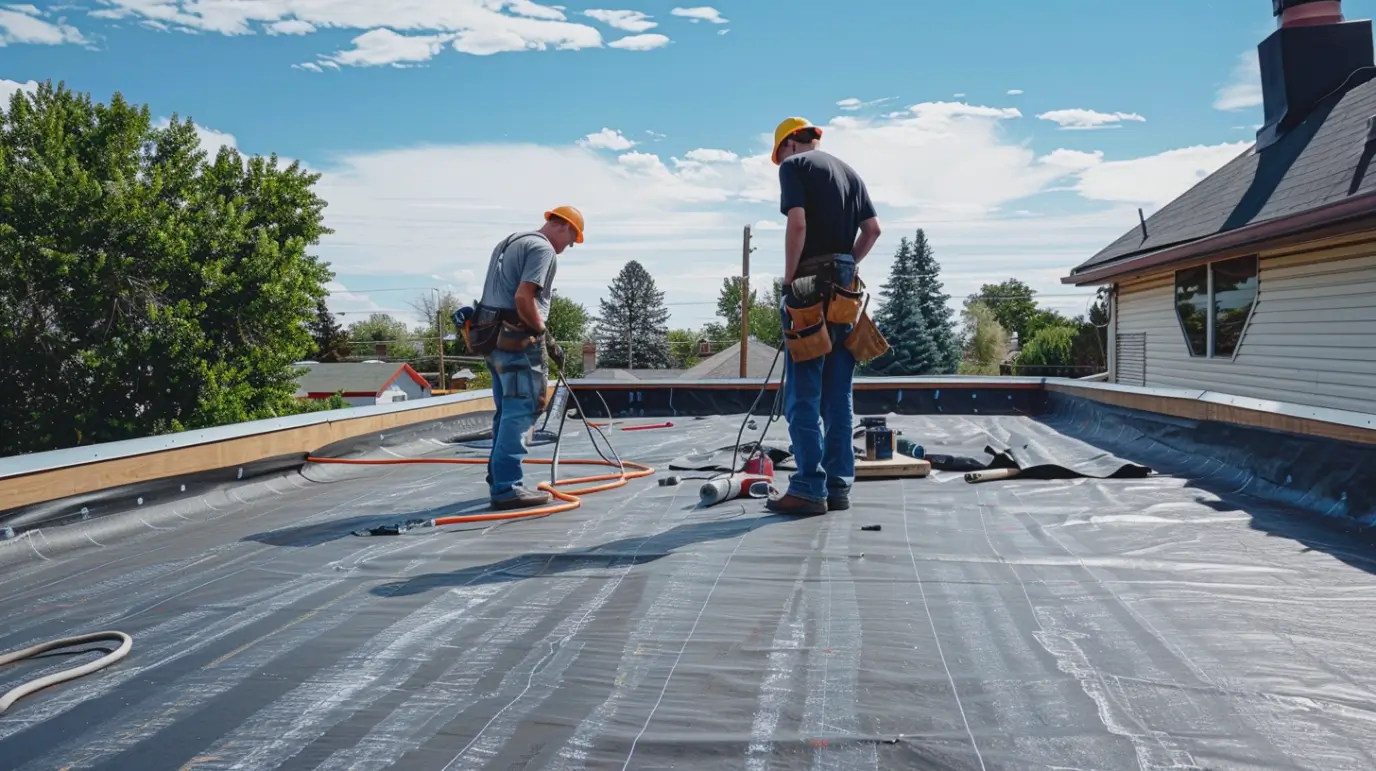
Patch Repair Techniques for Flat Roofs
Effective patch repair techniques are essential for addressing minor issues before they escalate into costly repairs. Utilizing high-quality roofing materials, including roofing cement and sealants, can offer an extra layer of protection against water infiltration. This method is advantageous for property owners who only need to remedy small cracks or damaged areas without committing to extensive repairs or a full replacement.
A thorough inspection should precede any patching work to determine the extent of the damage and the best course of action. Temporary fixes may suffice in emergencies, but ensuring long-term durability requires selecting suitable materials and applying them with precision. Understanding the specific type of flat roofing system will also guide the repair approach, enhancing the roof’s integrity and extending its lifespan.
When Is Patching an Effective Solution?
Patching can be effective for minor damage on relatively new roofs, such as small cracks or holes. It’s a quick fix for leaks caused by poor drainage or debris.
However, patching is a temporary solution. Acting promptly can prevent further damage and give you time to plan your next steps. Burrage Roofing is a professional contractor known for ensuring high-quality patch applications that last.
For older roofs nearing the end of their lifespan, alternative solutions may be necessary. Consulting a professional roofing contractor is always wise to assess your roof’s integrity and make the best choice.
Tools and Materials Needed for Patching
Essential tools and materials are vital for effective flat roof patching. A reliable roofing contractor recommends having roofing cement, sealant, and a membrane ready. These provide protection against water infiltration and enhance roof integrity. Safety equipment like harnesses and ladders is also crucial for safe access during repairs.
Tools such as utility knives, trowels, and rollers are indispensable. Utility knives ensure precision cuts, while trowels facilitate smooth sealant application. Brushes or sprayers may be needed for installing roof coatings based on the affected area size. By gathering these items, property owners can confidently address minor issues when they arise.

Step-by-Step Guide to Patching a Flat Roof
Proper patching of a roof starts with a thorough inspection. You need to look for leaks or any visible damage. Finding where the problems are helps target the repairs. This step also helps save on repair costs.
After the inspection, you must get the surface ready. Cleaning the areas that need work makes sure there is proper water flow. This step helps roofing cement and patch tape stick better. Once you use roofing cement and tape, you seal all cracks. This brings back the roof’s strength and keeps it working well.
Surface Preparation and Cleaning
Cleaning is the first step for good flat roof repairs. You need to take out all debris that may block roof water drainage. This makes it easy for water to flow and stops things like water pooling after you make a patch.
Proper water flow is very important. If there is a blockage or dirt, the patch may not stick well. Burrage Roofing uses special methods to clean and get the roofing membranes ready. This careful work makes repairs on flat roofs work well.
Applying Patches for Different Roofing Materials
Flat roofs require specific repairs to stay in good condition. For EPDM roofs, adhesive patches effectively seal cracks without compromising the membrane’s stretch.
TPO roofs need heat-sealed patches to ensure compatibility and durability against the elements.
BUR systems demand more attention, often using reinforced patches and roofing cement due to their multiple layers. Burrage Roofing specializes in all flat roof systems, providing reliable repairs for lasting results.
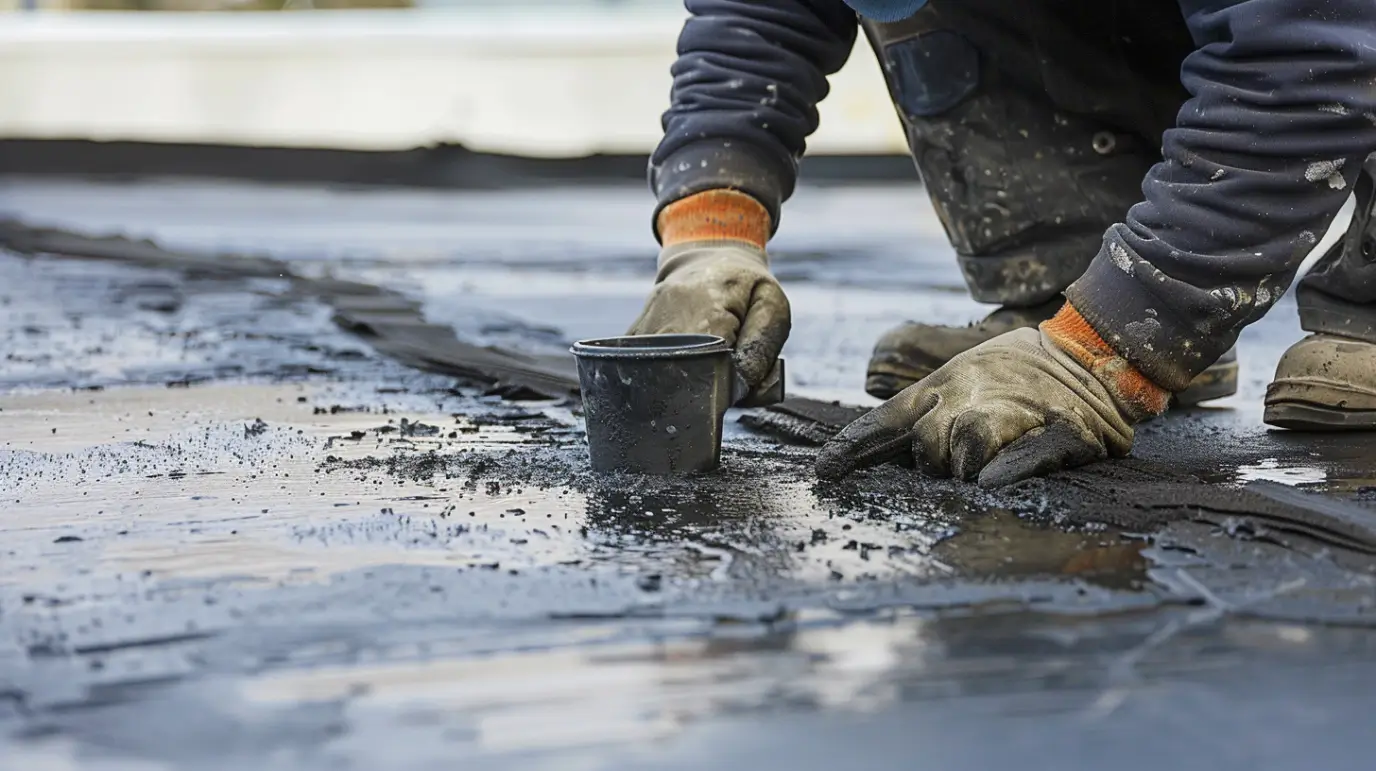
Re-Cover Techniques for Flat Roofs
Re-covering adds an extra layer of protection to your flat roof without extensive repairs, restoring its functionality. This method involves applying a roofing membrane or special coating to prevent water intrusion and enhance energy efficiency.
For Quad Cities property owners noticing wear on their flat roofs, re-covering can avoid the need for a full replacement. Burrage Roofing employs new technologies to extend roof lifespan while reducing costs for property owners.
What Does Re-Covering a Flat Roof Involve?
Re-covering a damaged flat roof involves adding new layers over the existing ones, preserving its structural integrity.
The process begins with cleaning and repairing any issues on the roof, creating a smooth surface for the new layers. Choosing the right materials is essential for durability, and thermal reflective coatings can significantly enhance energy efficiency.
Burrage Roofing provides tailored solutions for your roofing needs, ensuring peace of mind for years to come in the Quad Cities.
Pros and Cons of Re-Covering vs. Full Replacement
Choosing between re-covering and full replacement of a roof hinges on factors like damage extent and long-term goals. Re-covering offers added protection, potentially extending lifespan at a lower cost, but may not resolve underlying issues such as water infiltration or drainage problems.
Conversely, full replacement ensures structural integrity and energy efficiency with high-quality materials. While it involves higher upfront costs, it can prevent future repairs. Assessing the roof’s condition and consulting a professional contractor is crucial to determine the best option for your needs.
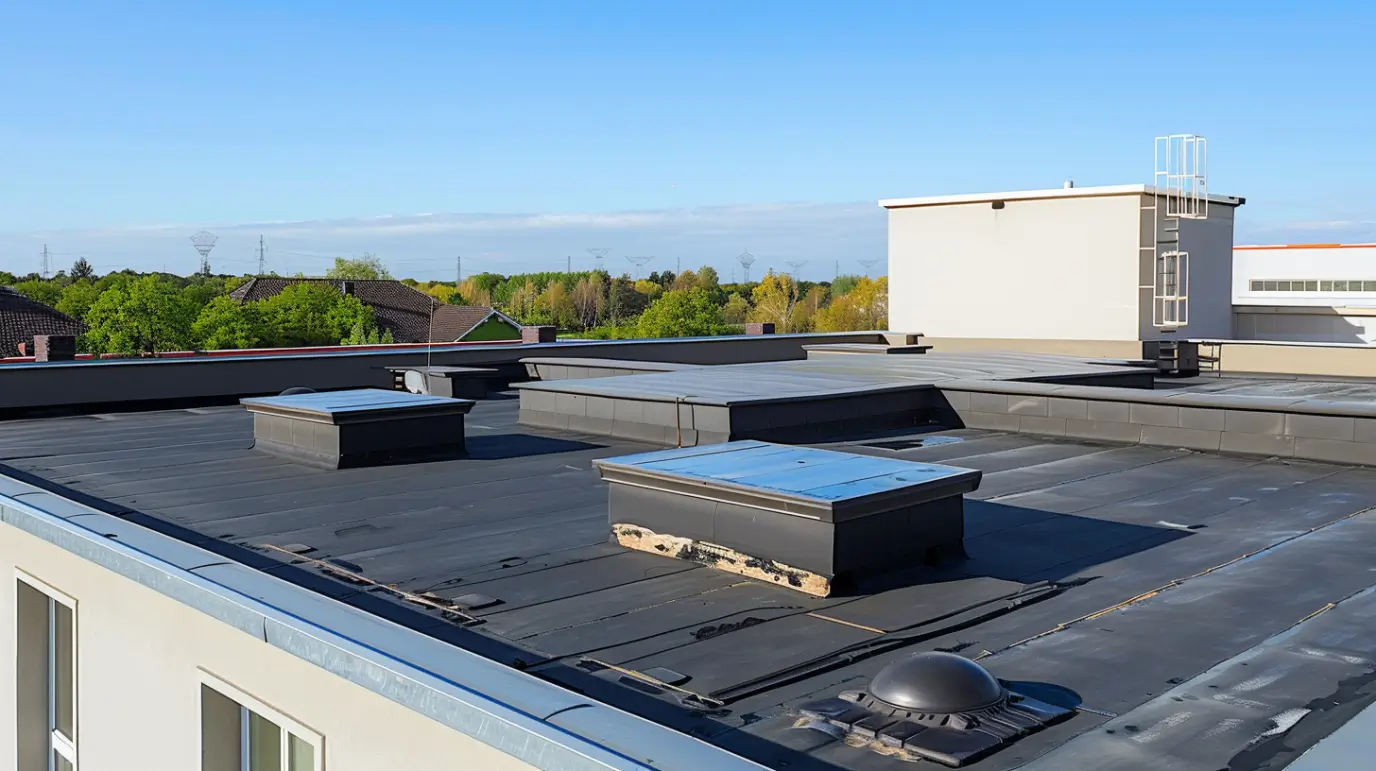
Patch vs. Re-Cover: Key Differences and Choosing What’s Best
The amount of damage on a flat roof often shows what the best course of action is. If there are minor issues, it is usually enough to do patch repairs. When the problems are bigger, re-covering is needed to make sure there is full protection.
Flat roof maintenance needs you to think about costs, how long it will last, and the structural integrity of the roof. Burrage Roofing helps people in the Quad Cities know what their choices are, so they pick what is right for their flat roof. This helps their roofs work well over the long run.
Durability, Cost, and Longevity Comparison
Durability varies between patch repairs and re-covering. Patching offers immediate fixes for new roofs, while re-covering strengthens older roofs for longevity.
Consider long-term repair costs; although patching is cheaper initially, repeated patches may exceed the cost of re-covering. Re-covering significantly extends your roof’s lifespan.
Choosing the right repair method can enhance your property’s value. Burrage Roofing guides you in selecting the best solution for your roof’s needs.
Suitability Based on Roof Age and Damage Level
Older roofs often require major repairs, like re-covering, due to weakened structural integrity. In contrast, newer roofs can be addressed with minor patch repairs that won’t shorten their lifespan.
The extent of damage matters too. Minor wear from weather or debris can be quickly patched, but extensive damage needs additional protection through re-cover techniques.
Consulting professional roofing contractors is advisable. They understand the best solutions for your property and can ensure repairs are done correctly to prevent further issues.
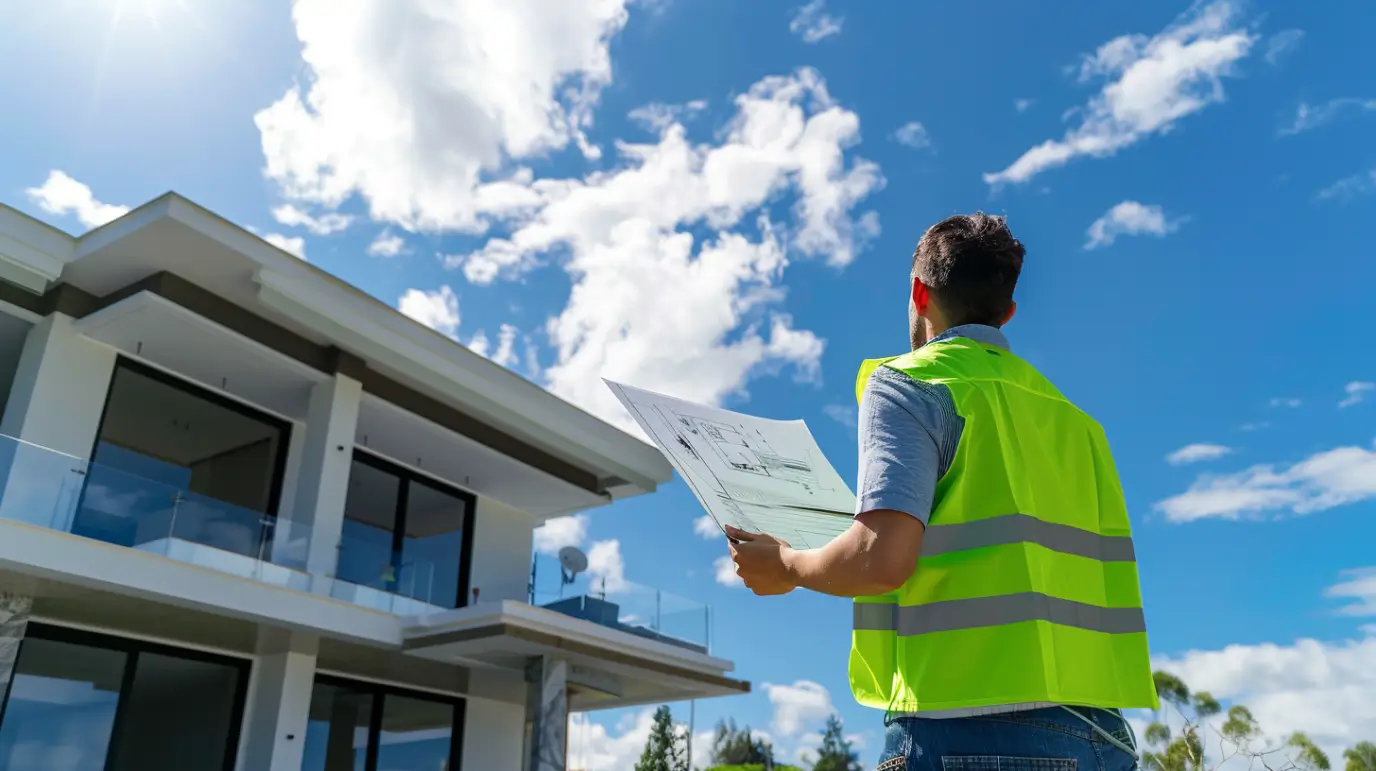
Burrage Roofing’s Approach to Flat Roof Repairs
With over 30 years working as a professional roofing contractor, Burrage Roofing always aims to give a thorough inspection and spot any necessary repairs for flat roofs in the Quad Cities.
Our scope of work is all about quick fixes that keep your roof’s integrity strong. This helps property owners avoid big and costly problems. You can trust Burrage Roofing to be with you at every step of the repair process and make things go smoothly.
Experience, Awards, and Trusted Partnerships
Burrage Roofing, an IKO Craftsman Premier Installer and BBB Accredited Business, builds strong trust with property owners one roof at a time. Our partnerships with SRS Supplier and James Hardie further enhance our reputation in the Quad Cities.
Homeowners rely on us for peace of mind, knowing we are industry leaders. Whether it’s a patch or a re-cover method, Burrage Roofing delivers reliable, award-winning service on every project.
Our Repair Process and Quality Assurance
A systematic approach defines our repair process, ensuring the utmost care for your flat roof systems. Initially, a thorough inspection is conducted to identify the extent of the damage and any underlying issues that require attention. This evaluation allows our professional roofing contractors to determine the best course of action, whether it be patching minor issues or planning for more extensive repairs. Utilizing high-quality roofing materials and equipment, our team prioritizes proper water flow and sealant application, enhancing the roof’s integrity.
Quality assurance is embedded in every stage of our work. Regular follow-ups and maintenance tips are provided, offering peace of mind to property owners. By implementing proactive measures, we help extend the life of your roof while minimizing future repair costs.
Trust the Experts
Understanding the difference between patching and re-covering your flat roof is key to making informed choices that impact its longevity and performance. With over 30 years of experience, Burrage Roofing is here to guide you in selecting the best solution for your flat roof. Our skilled team, strong partnerships, and quality checks ensure exceptional service every time. Contact us today for a free quote and let us help you maintain a strong and reliable flat roof in the Quad Cities area.
Read our blog: Cool‑Roof Technologies for Industrial Buildings
Frequently Asked Questions
How do I know if my flat roof can be patched or needs re-covering?
To determine if your flat roof requires patching or re-covering, assess the extent of damage. Small leaks or localized issues often warrant patching, while widespread deterioration, water pooling, or extensive surface cracks suggest a need for re-covering for long-term protection.
How long do patch and re-cover repairs typically last?
Patch repairs generally last 5 to 10 years, depending on the extent of damage and weather conditions. In contrast, re-covering can provide a lifespan of 15 to 20 years, as it involves applying a new layer over the existing roof for enhanced durability.
